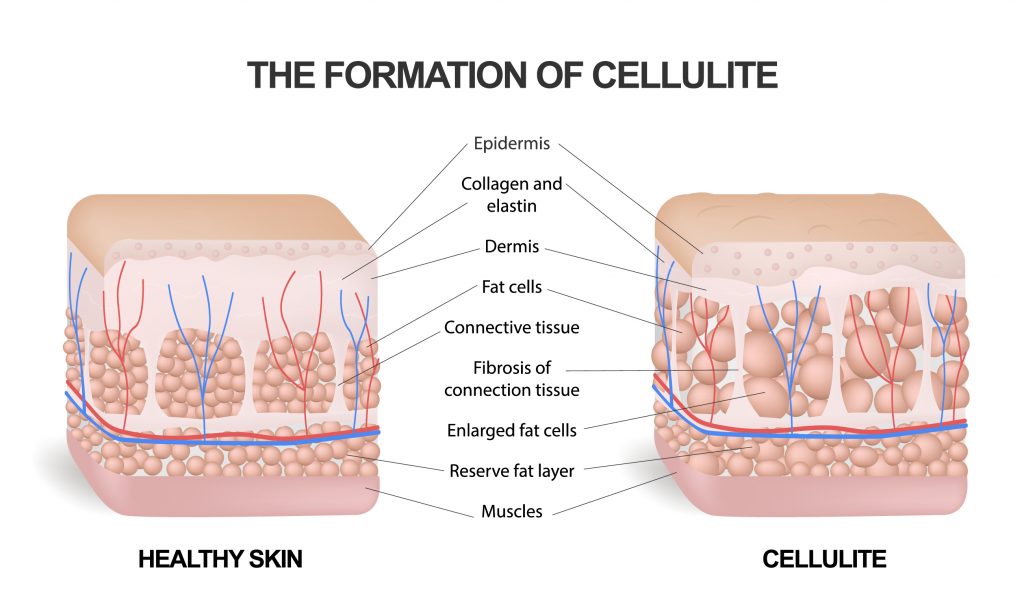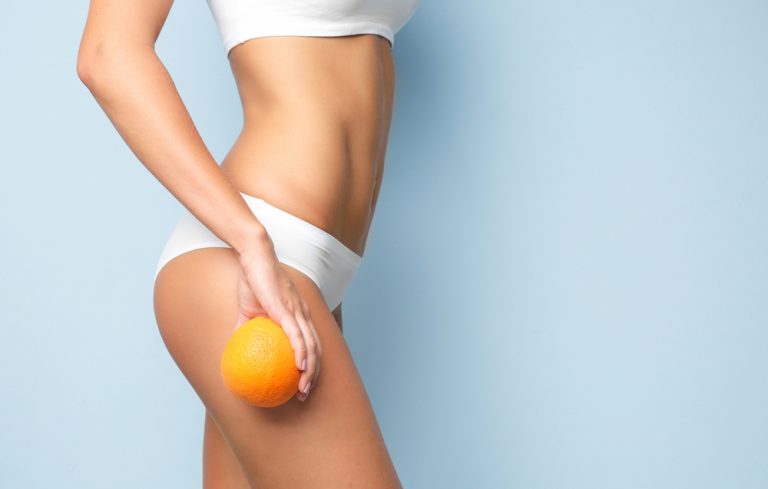Cellulite is the real bane of modern women's self-confidence. Even to 80 per cent of women said that they had to fight cellulite at some point of life. How can we make that fight against cellulite to be more effective?
What is cellulite and where does it come from?
Cellulite is an overgrown, unsightly and unevenly distributed fat tissue. Although our ancestors also had it, it did not develop as much as it does today, when it arises as a result of a low-active lifestyle and consumption of processed products. Cellulite most often affects the thighs, hips, buttocks, and sometimes also the back of the arms and stomach. These places are particularly vulnerable because adipose tissue compresses blood vessels there, which causes weaker nutrition and hypoxia of cells. Since lymphatic vessels cannot freely remove toxins, lumps of accumulated fat appear, which look a bit like an orange peel (hence we sometimes call cellulite by this name).
The next stages of cellulite
Stage 1 - barely visible changes that cannot be seen at first glance, but which can be seen even with a slight movement of the skin;
Stage 2 - unevenness is visible without the need to squeeze the skin;
Stage 3 – skin scars are getting bigger and clearer; the skin has changed colour and actually looks like an orange peel;
Stage 4 – proper cellulite, i.e. a complaint classified as a disease. The above intensifying symptoms result in inflammation of the subcutaneous tissues

What should be avoided?
The appearance of cellulite can be affected by the huge amount of parallel factors, so it is often difficult to determine the real source of the problem. The development of cellulite is favoured by poor veno-lymphatic circulation, frequent tanning sessions, use of hormonal contraception, too tight clothes, smoking cigarettes, as well as too hot baths. Stress, insomnia or postural defects may also be a risk factor.
A proper diet is extremely important; the formation of cellulite can be affected by frequent drinking of alcohol and coffee, insufficient hydration and irregular or discontinued physical activity. Women who face skin irregularities often have abnormal levels of estrogen (female sex hormones). With excess estrogen, weight gain or oedema may occur.
Fight against cellulite - diet, massages
To get rid of cellulite, you should avoid products with a lot of salt. For example highly processed food and ready-made spice mixtures. It is also worth giving up alcohol and sweetened drinks, but drink about 2-3 litres of mineral water a day. Replace red meat with fish, and above all remember about the five daily doses of vegetables and fruits.
Antioxidants, minerals and fibre will help you in a difficult fight with an orange enemy – you should try especially cherries, raspberries, blueberries, cranberries, tomatoes, spinach, carrots and ... oranges. If you feel like it, you can use appropriate dietary supplements also.
It is also worth trying to try anti-cellulite preparations. They contain ingredients that strengthen the skin and constrict blood vessels. You can rub such preparations into the skin as much as twice a day for about 2-3 minutes. Anti-cellulite massage is very important because it stimulates skin cells activity and better blood circulation, and at the same time helps to drain water and lymph from tissues.
An effective fight against cellulite
Can you win against cellulite once and for all? Fighting cellulite requires a lot of patience and perseverance. You should take care of your diet, avoid processed foods and ensure yourself the right amount of exercise. Even including massages and anti-cellulite creams, you cannot guarantee that you will get rid of cellulite completely. Diet, sport and systematic use of preparations can lead to very good results, but as soon as you stop caring for your skin and give up a healthy lifestyle, the orange peel will definitely remind you about itself. In order for the fight against cellulite to be considered a win one, try not to go back to old habits, in this way you will prevent adverse skin changes.






